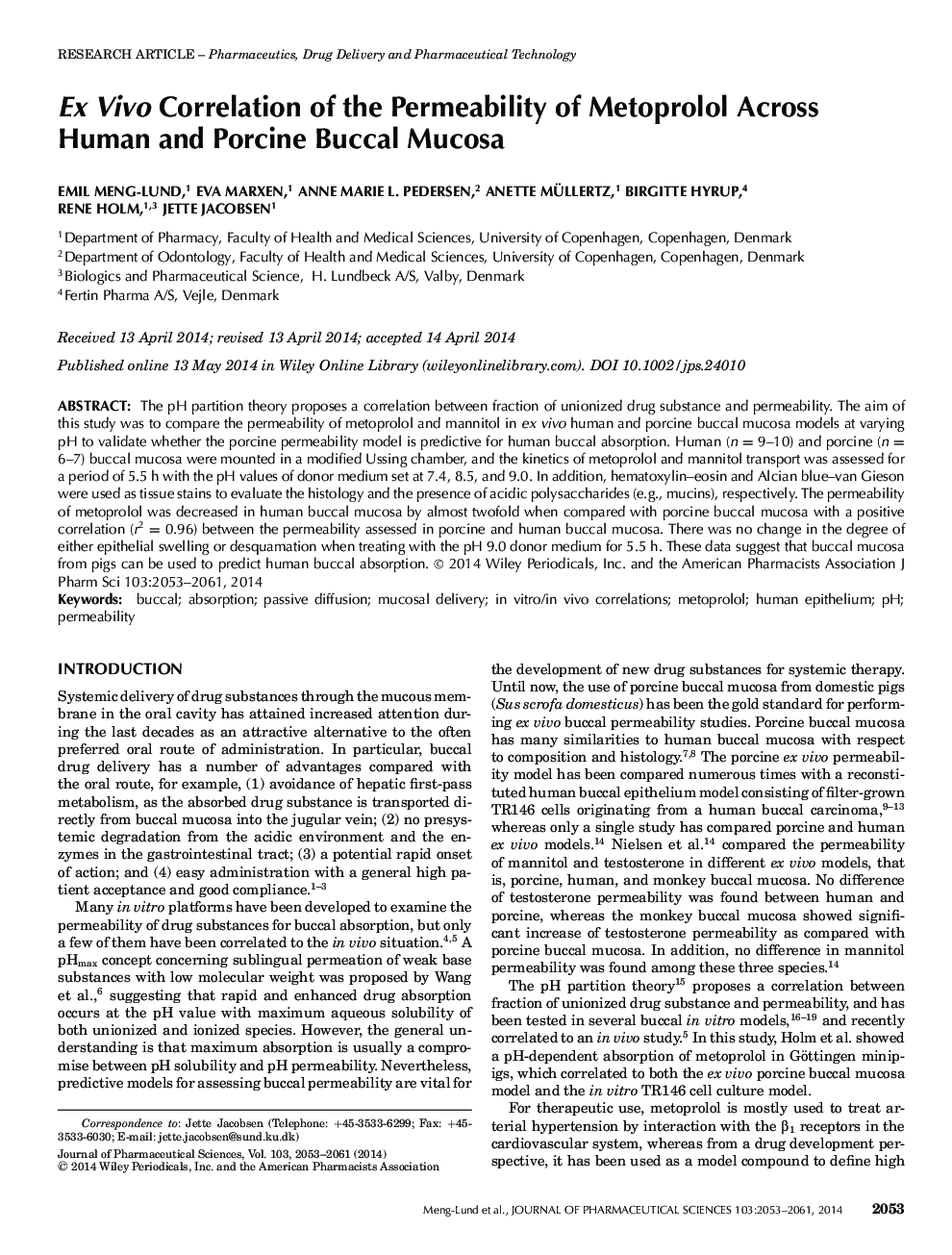| Article ID | Journal | Published Year | Pages | File Type |
|---|---|---|---|---|
| 10162453 | Journal of Pharmaceutical Sciences | 2014 | 9 Pages |
Abstract
The pH partition theory proposes a correlation between fraction of unionized drug substance and permeability. The aim of this study was to compare the permeability of metoprolol and mannitol in ex vivo human and porcine buccal mucosa models at varying pH to validate whether the porcine permeability model is predictive for human buccal absorption. Human (n = 9-10) and porcine (n=6-7) buccal mucosa were mounted in a modified Ussing chamber, and the kinetics of metoprolol and mannitol transport was assessed for a period of 5.5Â h with the pH values of donor medium set at 7.4, 8.5, and 9.0. In addition, hematoxylin-eosin and Alcian blue-van Gieson were used as tissue stains to evaluate the histology and the presence of acidic polysaccharides (e.g., mucins), respectively. The permeability of metoprolol was decreased in human buccal mucosa by almost twofold when compared with porcine buccal mucosa with a positive correlation (r2 = 0.96) between the permeability assessed in porcine and human buccal mucosa. There was no change in the degree of either epithelial swelling or desquamation when treating with the pH 9.0 donor medium for 5.5Â h. These data suggest that buccal mucosa from pigs can be used to predict human buccal absorption.
Keywords
Related Topics
Health Sciences
Pharmacology, Toxicology and Pharmaceutical Science
Drug Discovery
Authors
Emil Meng-Lund, Eva Marxen, Anne Marie L. Pedersen, Anette Müllertz, Birgitte Hyrup, Rene Holm, Jette Jacobsen,
